Black Peak 6387 M Expedition Details
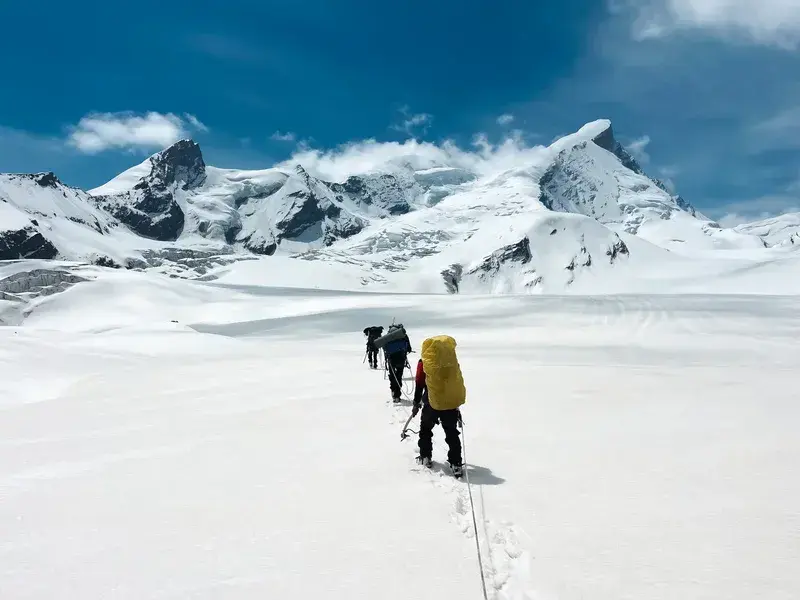
Black Peak 6387 M Expedition
Starting from
₹80,000 ₹68,000

17 Days Trip

Uttarakhand
Best season: May, June, September, October
Book A Tour
Total
₹ 0
Start Point : Dehradun
End Point : Dehradun
Short Itinerary
- Day 1: Arrival in Sankri (1,920m) – Gateway to Adventure
- Day 2: Drive to Taluka – Trek to Seema (2,560m)
- Day 3: Trek from Seema to Ruinsara Tal (3,350m)
- Day 4: Trek to Kyarkoti – Base Camp (3,800m)
- Day 5: Acclimatization at Base Camp
- Day 6: Load Ferry & Technical Training at Base Camp
- Day 7: Load Ferry & Technical Training at Base Camp
- Day 8: Occupy Advanced Base Camp (4,300m)
- Day 9: Base Camp to Advanced Base Camp (4,300m)
- Day 10: Advanced Base Camp to Camp 1 (5,200m)
- Day 11: Camp 1 to Summit Camp (5,500m)
- Day 12: Summit Attempt (6,387m) – Return to Camp 1
- Day 13: Reserve Summit Day
- Day 14: Camp 1 to Base Camp – Back to Lower Altitude
- Day 15: Base Camp to Seema via Ruinsara
- Day 16: Seema to Taluka – Drive to Sankri
- Day 17: Drive from Sankri to Dehradun – Departure Day
Black Peak (Kalanag) 6387 M Expedition – Brief Description
Black Peak (Kalanag) Expedition is a high-altitude adventure that takes you deep into the Garhwal Himalayas of Uttarakhand. Starting from the charming village of Sankri, the 17-day journey unfolds through dense forests, alpine meadows, and glacial lakes like Ruinsara Tal before approaching the mighty Bandarpunch range. At 6,387 meters, Black Peak is the highest peak in the Saraswati range and a dream summit for aspiring mountaineers.
This expedition offers a blend of trekking and technical climbing, making it ideal for those with basic mountaineering knowledge. It involves glacier walks, steep snow slopes (up to 60° gradient), and roped climbs. With proper acclimatization, gear training, and a dedicated buffer day for summit attempts, the expedition ensures safety and success.
Expect breathtaking views of Swargarohini, Bandarpoonch, and Gangotri peaks from the summit ridge — a true reward for your endurance. The route also immerses you in the culture of the Tons Valley and the pristine beauty of Govind Pashu Vihar National Park.
Perfect for trekkers ready to step into the world of technical mountaineering.
Black Peak (6387 M) Expedition – Day-Wise Itinerary
Day 1: Arrival in Sankri (1,920m) – Gateway to Adventure
Your journey into the heart of the Garhwal Himalayas begins with a long yet scenic 200 km drive from Dehradun to the Himalayan hamlet of Sankri. As you wind your way through pine forests, river valleys, and sleepy mountain towns, the magic of the mountains starts to unfold. Sankri is nestled in the Govind Pashu Vihar National Park and serves as the launchpad for many iconic treks. Upon arrival, check into a guesthouse, soak in the fresh mountain air, and get a good night’s rest for the days ahead.
Day 2: Drive to Taluka – Trek to Seema (2,560m)
After an early breakfast, a short 12 km jeep ride takes you to Taluka, the roadhead for the trek. The real journey begins here as you shoulder your rucksack and start the 14 km trek to Seema. The trail meanders along the Supin River, through dense pine, deodar, and oak forests, charming wooden bridges, and remote villages like Datmir. You’ll witness the simple lifestyle of the mountain folk and the traditional wooden houses of the Tons Valley. Reach Seema and set up camp beside the roaring river.
Day 3: Trek from Seema to Ruinsara Tal (3,350m)
Wake up to the sounds of birds and gushing rivers as you begin your trek to Ruinsara Tal. This sacred glacial lake lies amidst lush meadows and alpine forests. The 14 km trail gradually ascends, offering stunning views of snow-covered peaks like Swargarohini and Bandarpoonch. Ruinsara is not just a campsite but a spiritual place for locals. Once you reach, relax by the turquoise waters and absorb the serene energy of the valley.
Day 4: Acclimatization at Ruinsara Tal
A vital day for acclimatization. Use this rest day wisely by taking short hikes around the meadows, meditating by the lake, or practicing breathing techniques. Proper acclimatization here helps ensure a safe ascent in the days ahead. With views of Kalanag and the glacier ahead, your excitement will build as you get closer to the base of the mighty peak.
Day 5: Trek to Kyarkoti – Base Camp (3,800m)
Leave behind Ruinsara and trek 7 km to Kyarkoti, a high alpine meadow that becomes your base camp for the climb. The terrain changes as you climb over glacial moraines and past trickling streams, gradually reaching the open bowl where Base Camp sits surrounded by snow-clad giants. After setting up camp, your expedition leader will brief you on the plan ahead. Technical gear familiarization and a safety session will be conducted in the evening.
Day 6–8: Load Ferry & Technical Training at Base Camp
These are buffer and load ferry days used for carrying equipment and supplies to higher camps. Simultaneously, you’ll undergo mountaineering training under the supervision of expert guides. Learn the use of climbing gear including crampons, ascenders, descenders, ropes, and ice axes. Practice ascending, descending, and crevasse rescue techniques. This phase is crucial for building team rhythm and confidence for the summit push.
Day 9: Base Camp to Advanced Base Camp (4,300m)
Today, move to Advanced Base Camp (ABC), a more exposed campsite closer to the snow line. The 3–4 hour ascent takes you over rugged terrain and moraines. You’ll camp on snow for the first time, acclimating yourself to the cold and the thin air. Prepare for harsher conditions as the environment becomes more alpine.
Day 10: Advanced Base Camp to Camp 1 (5,200m)
Gear up for a steep climb to Camp 1. This stage involves glacier crossings and snow slopes, requiring roping up and proper pacing. The gradient increases to 40–50°, and you’ll start feeling the real Himalayan altitude. Set up camp in a high snowfield with stunning views of the entire Bandarpunch massif. Hydration and rest are key as you prepare for the summit push.
Day 11: Camp 1 to Summit Camp (5,500m)
A short but challenging move to Summit Camp. The air is thin, and your body is working harder than ever. The icy slopes demand focus and endurance. Once you reach Summit Camp, you’ll get your first close-up view of Black Peak’s final ridge. Early dinner and complete rest are essential tonight.
Day 12: Summit Attempt (6,387m) – Return to Camp 1
The big day starts around midnight. With headlamps on and hearts pounding, you begin your ascent on icy slopes with gradients of up to 60°. The summit climb takes 6–8 hours, depending on conditions. At the top, a vast 360° panorama opens up — Swargarohini, Bandarpoonch, Gangotri, and the peaks of Himachal shimmer all around. After a short summit celebration, descend cautiously back to Camp 1, exhausted but elated.
Day 13: Reserve Summit Day
This is a buffer day built into the itinerary to accommodate delays due to bad weather or health issues. If unused, it adds flexibility to your descent.
Day 14: Camp 1 to Base Camp – Back to Lower Altitude
Retrace your steps back to Base Camp. With the summit behind you, spirits are high and the descent feels lighter. The lush meadows and warmer air at Base Camp offer comfort and well-earned rest.
Day 15: Base Camp to Seema via Ruinsara
Start your return journey with a long trek down to Seema, retracing the beautiful trails through Ruinsara meadows and alpine forests. The trail is a celebration of all you’ve achieved — a time to reflect, share stories, and enjoy the descent.
Day 16: Seema to Taluka – Drive to Sankri
Trek the final leg back to Taluka and drive to Sankri. Celebrate your successful expedition with your team over warm food and campfire stories. A proper night’s sleep in Sankri feels like a luxury.
Day 17: Drive from Sankri to Dehradun – Departure Day
Bid farewell to the mountains as you drive back to Dehradun. The return journey is filled with reflections of snowy slopes, alpine lakes, summit views, and the bonds forged on the mountain.
✅ Inclusions
-
Meals During the Trek
All meals are provided from dinner on Day 1 to breakfast on Day 17, ensuring participants are well-nourished throughout the expedition. -
Forest Permits & Camping Charges
Necessary permits and fees for camping in designated forest areas are included. -
Accommodation
-
Camping: High-quality 4-season tents on a triple-sharing basis, equipped with thermal-rated sleeping bags and mats for comfort.
-
Lodging: Guesthouse or lodge stays in Sankri on Day 1 and Day 16 are covered.
-
-
Support Staff
Experienced trek guides, cooks, helpers, and mules or porters for carrying common supplies, facilitating a smoother trekking experience. -
Expedition Leader
An IMF (Indian Mountaineering Foundation) approved expedition leader will oversee the trek, ensuring safety and guidance. -
Technical Equipment
Provision of essential technical gear, including PP ropes, helmets, ice axes, crampons, mountaineering boots, snow stakes, and dead man anchors. -
Peak Booking Fee Charges
The peak booking fee for Indian nationals, as charged by the IMF, is included in the package. - Transportation
Transport between Dehradun and Sankri, and return.
❌ Exclusions
-
Portage of Personal Bags
The cost for portaging personal bags during the trek is not included and may incur additional charges. -
Travel Insurance
Participants are advised to arrange their own travel insurance, as it is not covered in the package. -
Personal Expenses
Any personal expenses, such as additional meals, snacks, or personal items, are not included. -
Unspecified Expenses
Any expenses not explicitly mentioned in the inclusions list are excluded and will be the responsibility of the participants. -
Early Departure Costs
Any costs arising from early departure from the expedition are not covered. -
Additional Costs for Early Completion
Any extra costs incurred in the event of finishing the expedition early are excluded. -
Personal Nature Expenses
Expenses such as laundry, phone calls, and beverages are not covered. -
Tips
Tips for local guides, porters, or support staff are not included and are at the discretion of the participants. -
Forest Permit for Foreign Nationals
Forest permit charges for foreign nationals are not included and will need to be arranged separately. - IMF Peak Booking Fee for foreign nationals US$ 700 for a team of two members and US$325 for every additional participants & Mandatory Liaison Officer Fee for foreign expeditions ( ~USD 500 for group of 10)
-
Any additional cost arising out of unforeseen circumstances such as bad weather, political unrest, road blockages, etc.
🏔️ Expedition Highlights
🔺 Highest Peak in the Saraswati Range
Conquer Black Peak, towering at 6,387 meters — the tallest in the Bandarpunch massif.
🌲 Scenic Trail through Govind Pashu Vihar National Park
Trek through ancient forests, wildflower meadows, and alpine lakes in one of Uttarakhand’s most biodiverse regions.
🏕️ Campsites like Ruinsara Tal & Kyarkoti
Camp beside glacier-fed lakes and under starlit skies surrounded by mighty peaks.
🧗♂️ Intro to Technical Mountaineering
Traverse glaciers, crevasses, and 60° snow slopes with full alpine gear and rope techniques.
🏔️ Spectacular Summit Views
Catch panoramic vistas of Swargarohini, Bandarpoonch, Gangotri peaks, and the upper Tons Valley.
🛕 Cultural Flavors of Sankri & Osla
Explore traditional wooden villages and immerse yourself in the customs of the Tons Valley.
📆 17-Day Comprehensive Expedition
Includes buffer days, technical training, acclimatization, and guided summit attempt.
🧭 Led by Certified & Experienced Sherpas and Guides
Safety-first approach with proper support, equipment, and medical backup.
This expedition offers a blend of adventure, natural beauty, and cultural richness, making it a memorable experience for trekking enthusiasts.
🏕️ Essential Mountaineering Gear Checklist
Clothing – Layer Up Wisely
-
Base layers (thermal innerwear – top & bottom)
-
Insulated jacket (down or synthetic for sub-zero temps)
-
Fleece jacket or softshell
-
Waterproof windcheater or hardshell jacket
-
Waterproof pants or rain pants
-
Trekking pants (2–3 pairs)
-
Quick-dry t-shirts or shirts (2–3)
-
Innerwear (thermal & regular)
-
Insulated gloves (waterproof)
-
Fleece or liner gloves for layering
-
Woolen cap or balaclava
-
Neck gaiter or buff
-
Sun cap or wide-brimmed hat
-
Trekking socks (4–5 pairs)
-
Woolen socks (2 pairs for cold nights)
Footwear
-
Trekking shoes (high-ankle, waterproof)
-
Snow boots (Scarpa or equivalent – often provided by organizers)
-
Camp sandals or crocs for evenings
-
Gaiters (to keep snow and debris out – usually provided)
Bags & Packs
-
Backpack (50–65L) with rain cover
-
Daypack (20–30L) for summit day
-
Duffel bag or rucksack (for mule load)
-
Dry bags or plastic ziplocks for waterproofing
Mountaineering & Technical Gear (mostly provided)
-
Crampons
-
Ice axe
-
Climbing rope
-
Carabiners and harness
-
Helmet
-
Snow goggles
-
Gaiters
-
Ascender or descender if needed
Camping Essentials
-
Sleeping bag (rated for -15°C to -20°C) – usually provided
-
Sleeping mat or foam pad
-
Headlamp with extra batteries
-
Trekking poles
-
Water bottles (total 2L capacity) or thermos
-
Mug and lunchbox
-
Power bank
-
Sunglasses (UV-protected, category 3 or 4)
Toiletries & Personal Hygiene
-
Toothbrush, toothpaste, biodegradable soap
-
Tissue roll and wet wipes
-
Sunscreen (SPF 50+) and lip balm
-
Hand sanitizer and face towel
-
Menstrual hygiene products (if applicable)
Medicines & Personal Care
-
Personal medications
-
Diamox (for AMS – only with doctor’s advice)
-
Paracetamol or painkillers
-
Broad-spectrum antibiotics
-
Band-aids or blister patches
-
ORS or electrolyte sachets
-
Muscle relaxant spray like Volini
-
Altitude sickness tablets
Documents & Miscellaneous
-
Valid ID proof (original and photocopy)
-
Medical certificate (if required)
-
Passport size photos (2–3)
-
Some cash (ATMs may not be available)
-
Notebook and pen
✅ Pro Tip: Pack light but smart. Stick to essentials, keep your backpack waterproof, and test your gear before the expedition.
Measures Taken by Parvat Exploration to Ensure the Security of Trekkers
At Parvat Exploration, trekking isn’t just an adventure – it’s a transformative journey into the heart of the Himalayas. But with every adventure comes the responsibility of ensuring your well-being. Backed by a highly qualified team, local expertise, and global safety standards, we take every measure possible to prioritize your safety.
🧗♂️ Fitness Evaluation & Trek Readiness
High-altitude treks demand physical endurance and mental resilience. Before confirming your participation in any of our treks, we assess your fitness to minimize risk.
-
Body Mass Index (BMI) Check: Trekkers are evaluated to ensure a healthy BMI range suited for high-altitude exertion.
-
Fitness Declarations: Participants are required to submit fitness proof or undergo an assessment if needed.
-
Acclimatization Protocols: Every itinerary includes rest days specifically for acclimatization to reduce the risk of AMS.
🩺 Health Monitoring on Trail
Throughout the journey, your health is monitored regularly by our trained trek leaders:
-
Vital Checks: Daily monitoring of oxygen levels, pulse rate, and blood pressure.
-
Health Cards: Each trekker’s vitals are documented and can be reviewed at the end of the trek.
-
Immediate Response: Any early symptoms of AMS or other altitude-related issues are immediately addressed.
💊 Medical Safety Measures
Parvat Exploration is prepared with a comprehensive medical kit on all high-altitude treks. Our kits are equipped with:
-
Blood Pressure Monitor
-
Oxygen Saturation Meter (Pulse Oximeter)
-
Portable Oxygen Cylinders
-
High-altitude emergency medicines:
-
Diamox (for AMS)
-
Dexamethasone (for HAPE/HACE)
-
Nifedipine
-
Asthalin Inhaler
-
Disprin
-
Sterile Syringes
-
Our trek leaders are AMC-qualified (Advanced Mountaineering Course) and trained in Wilderness First Aid.
⛺ World-Class Trekking Equipment
We never compromise on gear. We provide:
-
Customized Tents: Weatherproof tents that retain heat up to 10°C higher than outside.
-
-15°C Sleeping Bags: Suitable for sub-zero Himalayan nights.
-
Microspikes & Gaiters: Essential gear for snow and slippery terrain.
-
Ropes, Ice Axes, and Stretchers as needed for technical terrain or rescue.
🍲 Nutrition & Hydration on Priority
We fuel your journey with the right meals at the right time:
-
Nutritious Meals: Our food is designed to meet high-altitude dietary needs.
-
Local Delicacies: Experience the taste of Uttarakhand and Himachal on every trek.
-
Hydration Monitoring: Trekkers are routinely reminded and encouraged to hydrate properly to reduce risk of AMS.
🚨 Emergency Response to AMS, HAPE & HACE
Our trek leaders are well-trained to detect and manage Acute Mountain Sickness (AMS), and more severe conditions like HAPE (High Altitude Pulmonary Edema) and HACE (High Altitude Cerebral Edema).
Recognizing AMS Symptoms:
-
Headache, nausea, dizziness
-
Difficulty sleeping or breathing
-
Loss of appetite or fatigue
Our Action Plan:
-
Triple One Protocol: 1 Disprin + 1 Liter Water + 1 Hour Rest.
-
Descent Protocol: If symptoms persist, the trekker is immediately escorted to a lower altitude.
-
Oxygen Support & Medication: Provided immediately if symptoms escalate.
We advise trekkers never to self-medicate. Always consult the trek leader first.
⚠️ Risk and Response Mechanism
🏔️ Altitude Risk
Response: Constant health checks, gradual ascent, acclimatization days, oxygen support.
🌦️ Weather Uncertainty
Response: Trek leaders take the final call. We never proceed in unsafe conditions.
🧍♂️ Injuries on Trail
Response: Minor injuries treated on-site. Serious injuries are evacuated via stretcher to the nearest roadhead and medical center.
📵 Lack of Communication
Response: Our team uses walkie-talkies and local support staff as runners for effective coordination across camps.
🛡️ Why You Can Trust Parvat Exploration
-
✅ 3 IMF Associate Members on our core team – among only 100 in India.
-
✅ Accredited by ATTA,ATOAI, IMF, and Uttarakhand Tourism.
-
✅ Himalayan Locals as your guides – born and raised in the mountains.
-
✅ Focus on year-round safety, whether it’s a summer climb or winter expedition.
🔚 Final Word
Parvat Exploration believes a memorable trek is a safe trek. We combine years of mountaineering expertise, world-class equipment, local insight, and a commitment to excellence so you can explore the Himalayas with confidence.
Train your lungs, legs, and mind – all three matter equally.
🏋️♂️ Extended Fitness Tips for High-Altitude Mountaineering:
1. Build Endurance Over Speed:
You’re not training for a sprint; you’re preparing for a long-duration challenge. Go for long, slow hikes with a backpack (gradually increase weight). Weekend treks are excellent real-time simulators.
2. Train with a Backpack:
Start adding 5–10 kg weight in your backpack during your stair climbs or trail hikes to mimic the actual load you’ll carry during the expedition.
3. Strengthen Your Ankles & Knees:
Do step-ups, box jumps, and single-leg balances to reduce the risk of injury. Downhill walks strain knees—practice them intentionally.
4. Flexibility & Mobility:
Add yoga and dynamic stretching to your regime. A flexible body handles terrain variations better and helps avoid cramps or joint stiffness.
5. Altitude Acclimatization Strategy:
Get used to climbing high, sleeping low. If you live in the plains, consider weekend hikes at moderate altitudes (2,000m–3,000m).
6. Improve Recovery Time:
Monitor how fast your heart rate returns to normal post-exercise. Better recovery = better adaptation at altitude. Try interval training (HIIT or hill sprints once or twice a week).
7. Mental Conditioning:
Mountaineering tests your grit. Practice meditation, cold showers, solo walks in nature—anything that builds patience and tolerance in tough conditions.
8. Nutrition Discipline:
Eat clean. Focus on complex carbs, good fats, and protein. Hydrate constantly. Add electrolytes to your water when training hard or sweating a lot.
9. Simulate Trek Days:
Try doing back-to-back long hikes over weekends. It mimics multiple trekking days and builds resilience.
10. Sleep Hygiene:
Altitude can mess with sleep. Get into a regular sleep cycle now, and train your body to rest and recover even after late-night activities.
Terms and Conditions – Parvat Exploration
Welcome to Parvat Exploration! We are thrilled to be a part of your journey into the Himalayas. To ensure a smooth, safe, and transparent experience, we request you to read our terms and conditions carefully before booking any trek, tour, or service with us.
1. Booking and Payment Terms
-
A minimum advance payment of 40% of the total package cost is required to confirm your booking.
-
The balance 60% must be paid 15 days prior to the start of the trek or tour.
-
For bookings made within 15 days of departure, 100% payment is required at the time of booking.
-
Payments can be made via bank transfer, UPI, credit/debit cards, or other authorized digital methods.
-
Payment receipts will be acknowledged via email or WhatsApp.
2. Cancellation Policy
-
30+ days before departure: 90% refund of the advance amount.
-
15–29 days before departure: 60% refund of the advance amount.
-
7–14 days before departure: 30% refund of the advance amount.
-
Less than 7 days or no-show: No refund.
-
Refunds will be processed within 10–15 business days to the original payment method.
3. Itinerary Policy
-
The itinerary is tentative and subject to change based on weather, road conditions, local restrictions, or unforeseen events.
-
Final details will be shared closer to the departure or on-ground by the trek leader.
-
The trek leader reserves the right to make adjustments in the interest of safety or logistics.
4. Hotel & Transport Disclaimer
-
Hotel check-in/out timings follow the respective hotel’s policies; early check-in or late check-out may incur extra charges.
-
Transport may be shared or private depending on the package.
-
In the case of vehicle breakdowns, delays due to weather/roadblocks, or similar issues, we will make reasonable alternative arrangements—but no refunds or compensation will be provided.
5. Risk & Liability Disclaimer
-
Himalayan treks involve inherent risks including altitude sickness, landslides, injuries, wildlife, and weather unpredictability.
-
By booking, participants voluntarily accept these risks. Parvat Exploration, its team, or affiliates shall not be liable for any loss, injury, or delays.
-
Participants must follow trek leader instructions and avoid risky behavior.
-
Any costs for emergency evacuation, medical help, or rescue must be borne by the participant.
6. Medical & Fitness Requirements
-
Participants must disclose any pre-existing medical conditions at the time of booking.
-
High-altitude trekking demands good physical fitness; participants are advised to follow a preparatory fitness regime.
-
Parvat Exploration reserves the right to deny participation to individuals found medically unfit or under the influence of alcohol or drugs.
7. Code of Conduct
-
Trekkers are expected to maintain respectful behavior toward fellow participants, locals, and staff.
-
Littering, damaging nature or property, or violating forest laws may result in termination without refund.
-
Smoking and drinking are strictly prohibited during trek hours and at campsites.
8. Travel Insurance
-
Travel insurance is strongly recommended and should cover evacuation, injury, illness, and trip cancellations.
-
Not included in the package unless specifically mentioned.
-
Participants may purchase personal insurance from authorized providers.
9. Force Majeure
-
Parvat Exploration is not liable for service delays or failures due to natural disasters, pandemics, war, strikes, government restrictions, or other uncontrollable events.
10. Jurisdiction
-
Any dispute shall be under the jurisdiction of courts in Dehradun, Uttarakhand, or as otherwise specified by Parvat Exploration.
11. Contact Us
📞 +91 83830 88283 | +91 94561 12947
📧 explore@parvatexploration.com
🌐 www.parvatexploration.com
12. Special Casual Leave for Government Employees
Parvat Exploration, a registered adventure tour operator, qualifies government employees to avail Special Casual Leave (SCL) for up to 30 days in a calendar year, as per Pay Commission guidelines. This is applicable when participating in trekking or mountaineering expeditions organized by registered operators like us.
13. Special Note for Junior Trekkers
-
Participants below 15 years must be accompanied by a parent or guardian.
-
Trekkers aged 15 to 18 years may participate solo with a signed disclaimer from a parent or guardian.
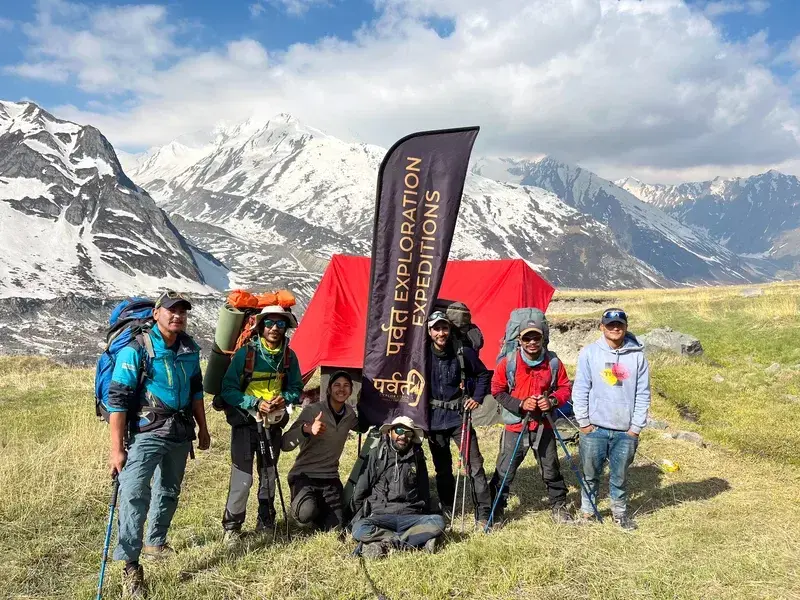
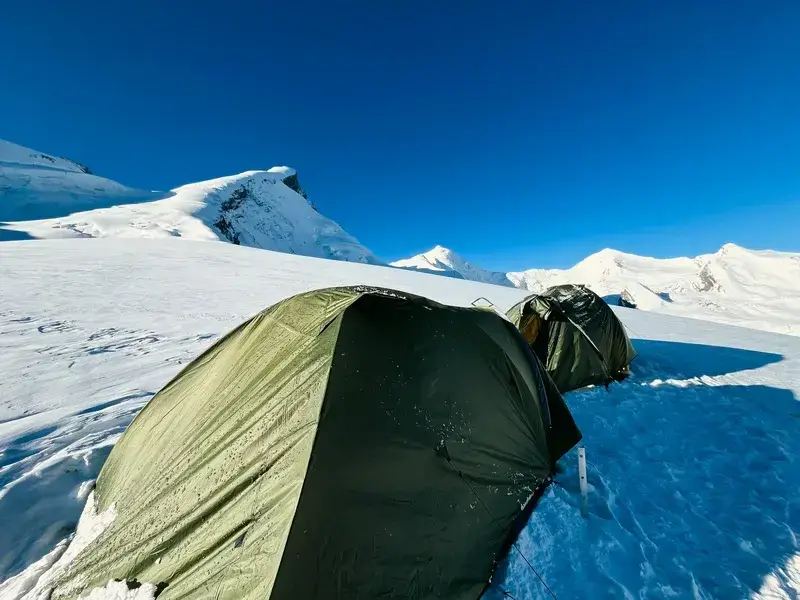


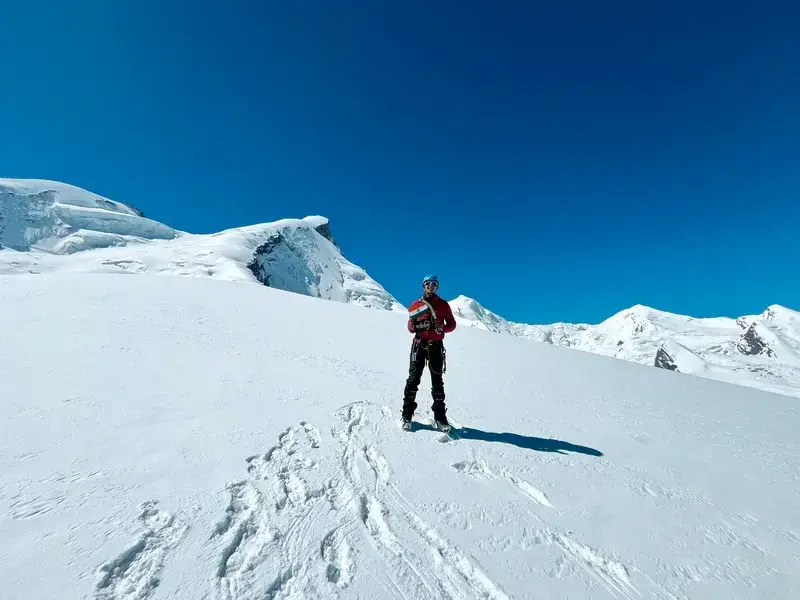
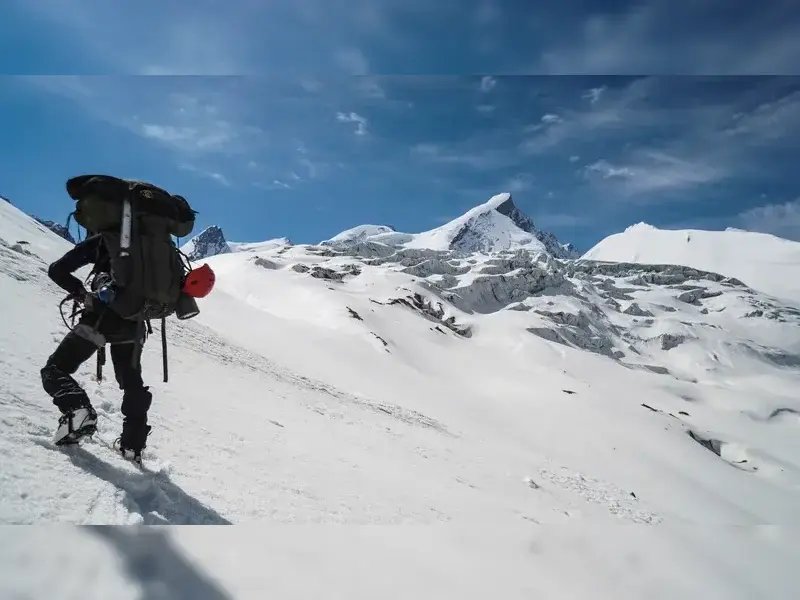
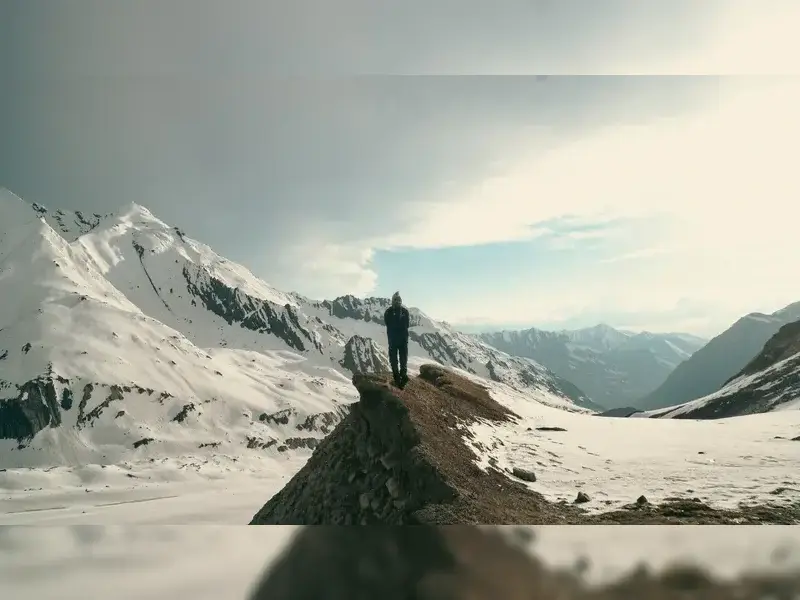
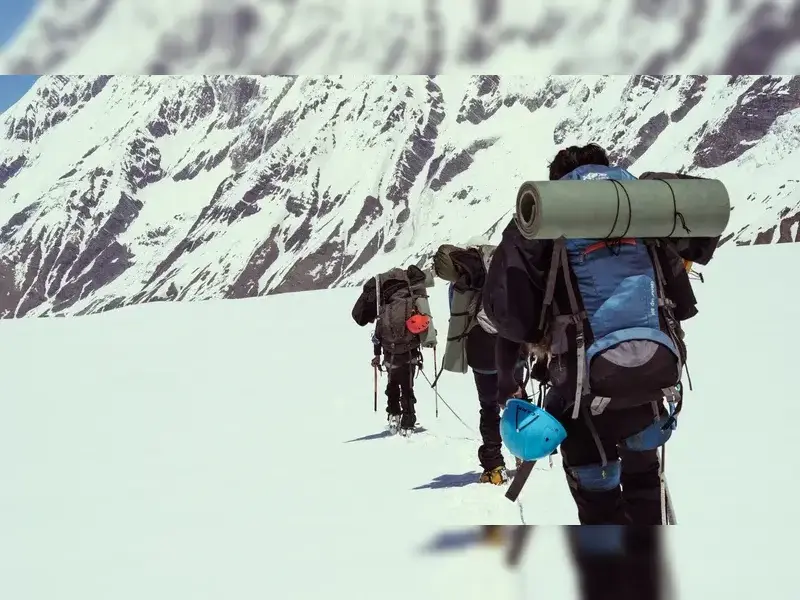
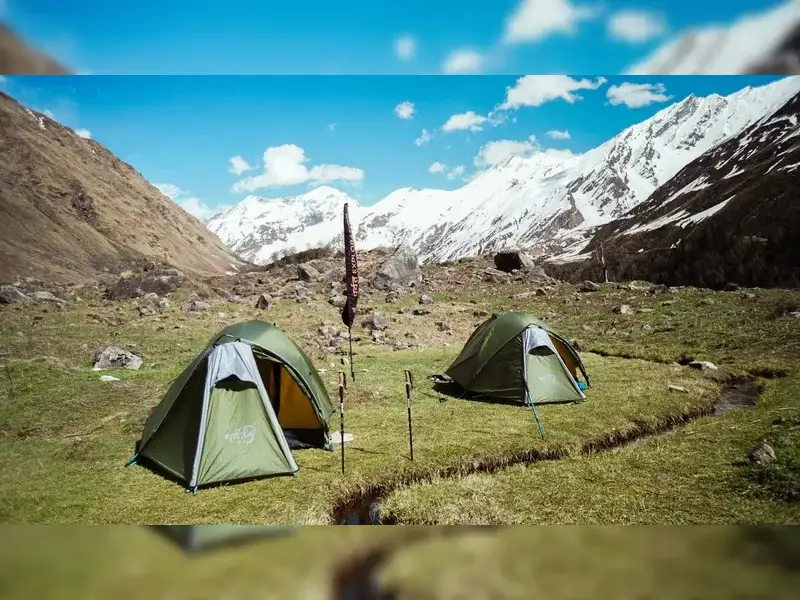
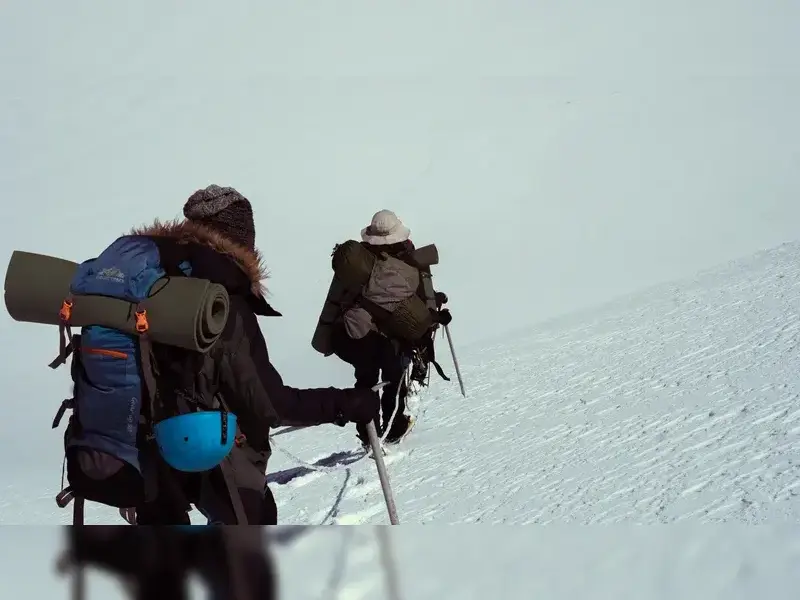
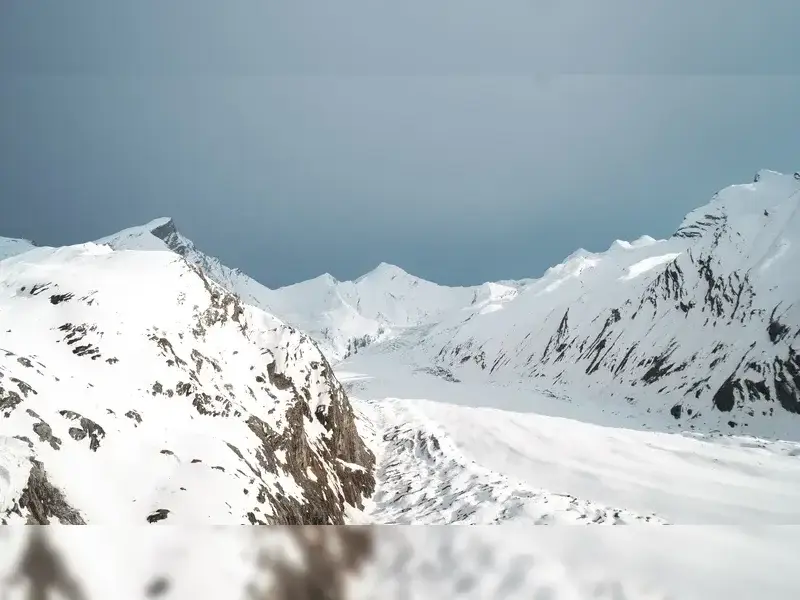
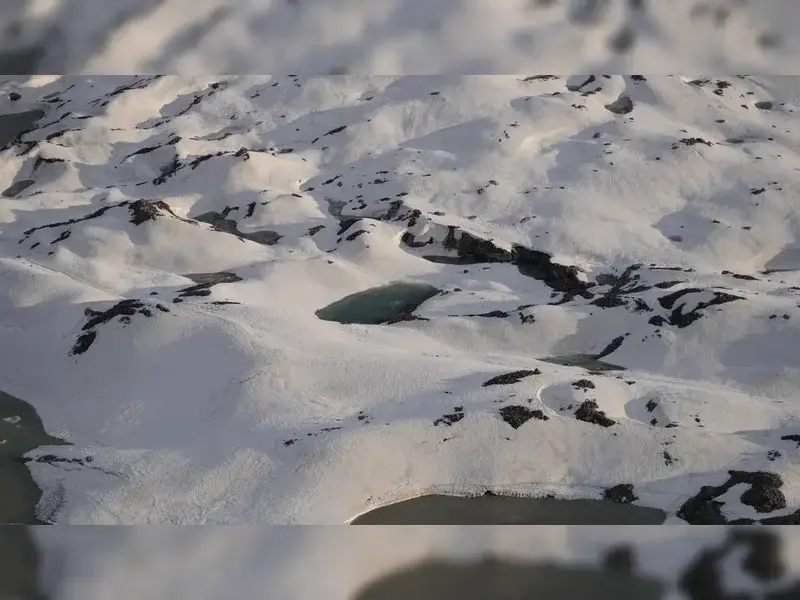




Reviews
There are no reviews yet.